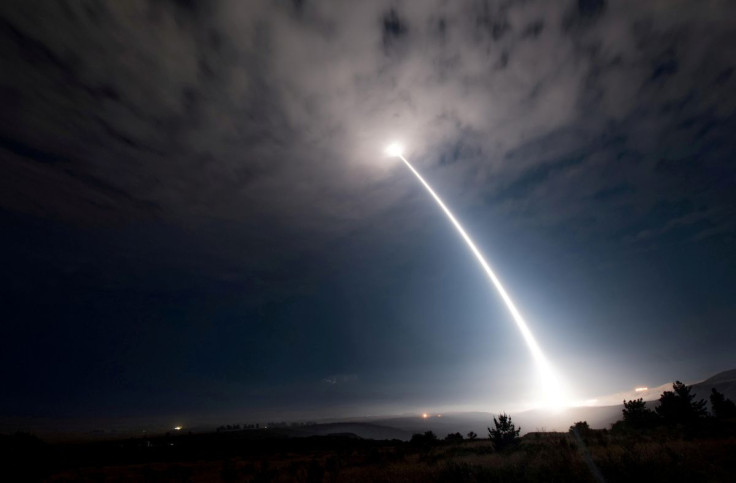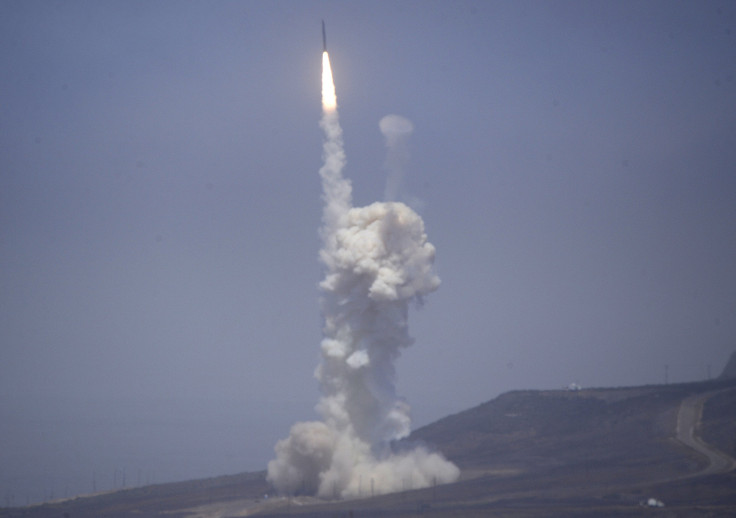Watch: US Test Launch Minuteman III Missile To Confirm Readiness Against Nuclear Attacks 'Anytime, Anywhere'

KEY POINTS
- A team of Air Force and Navy aboard a Navy E-6 aircraft test launched the Minuteman III missile
- ICBM traveled from the California air base to Kwalajein Atoll in the Marshall Islands
- The U.S. military is developing a successor to Minuteman III after its 50 years in service
The U.S. military has launched an operational test of its intercontinental ballistic missile (ICBM) to demonstrate the country's nuclear deterrence capabilities.
According to the Vandenberg Space Force Base, a joint team of Air Force Global Strike Command Airmen and Navy aircrew launched the unarmed Minuteman III ICBM on Wednesday using the Airborne Launch Control System.
Several airmen from the 625th Strategic Operations Squadron of the Offutt Air Force Base in Nebraska also boarded the naval aircraft to witness the test launch.
The ICBM, which contains a re-entry vehicle, was controlled by the air force and naval crew aboard a Navy E-6B Mercury aircraft.
Minuteman III's re-entry vehicle traveled to the Kwajalein Atoll in the Marshall Islands, approximately 4,200 miles from the California air base.
"This test launch reinforces what our allies and partners already know - we're always ready to defend the United States with combat-ready nuclear forces anytime, anywhere, on order, to conduct [a] global strike," Gen. Thomas Bussiere, the commander of the Air Force Global Strike Command, said.
Bussiere said he has "full and unwavering confidence" in the ability of his command to deter nuclear threats against the U.S.'s main adversaries, noting that they had tested over 300 times before.
According to the Navy, it currently has 16 E-6 aircraft capable of TACAMO, or "Take Charge and Move Out" mission. This allows high-ranking officials, including the president, to control nuclear forces while airborne.
It was the first ICBM test since Russian President Vladimir Putin suspended Russia's participation in the New START treaty with the U.S. and stopped sharing data on their nuclear arsenals.
In response, the Biden administration has also suspended sharing "high-level" details of its deployed nuclear weapons with Russia.
However, the U.S. continues to share the movement and operational status of its strategic bombers, missiles and submarines with Russia.
The U.S. is developing a successor to Minuteman III, which has been in service for over 50 years.
The new generation of ICBM, called LGM-35A Sentinel, is expected to reach its initial operational capability in 2029, Defense News reported.
The Air Force claimed that the Sentinel would be easier to maintain and upgrade than the existing Minuteman, saving the government more money and keeping the new ICBM missile in service into the 2070s.
The U.S. is also building its first new nuclear warhead since the end of the Cold War.
In 2021, the Senate Armed Services Committee signed off $134 million of 2022 funding to develop a submarine-launched ballistic missile warhead called "W93," according to the Bulletin of the Atomic Scientists.
The new nuclear warhead would replace the W76 and W88 warheads on the naval submarines by 2034. It would also be carried on the new Columbia-class submarines and use the new Mark 7 aeroshell.

© Copyright IBTimes 2025. All rights reserved.






















